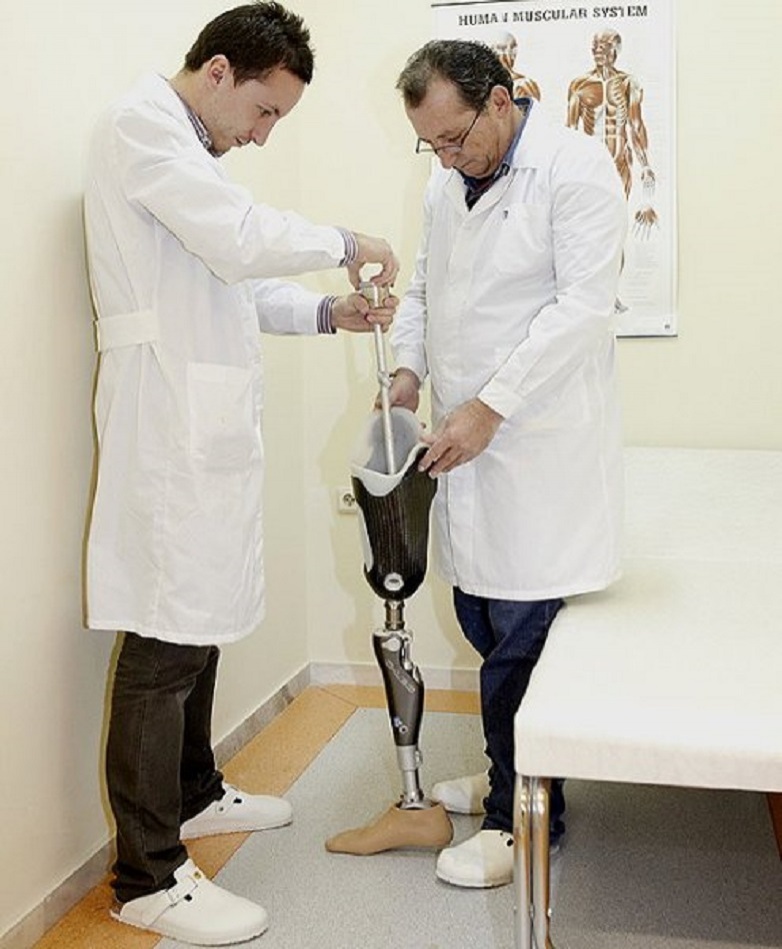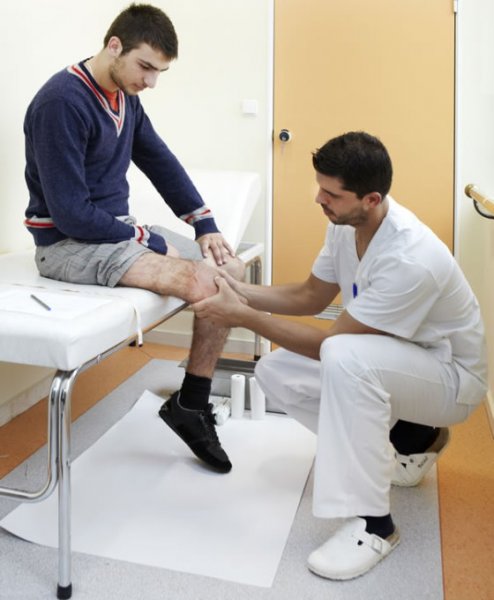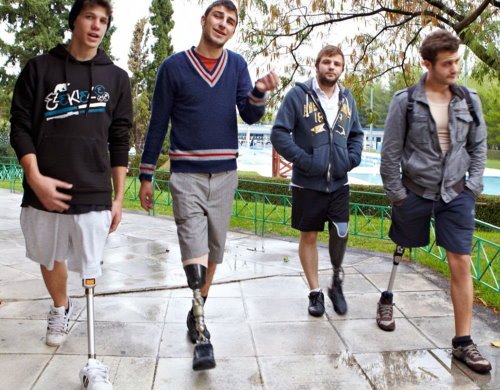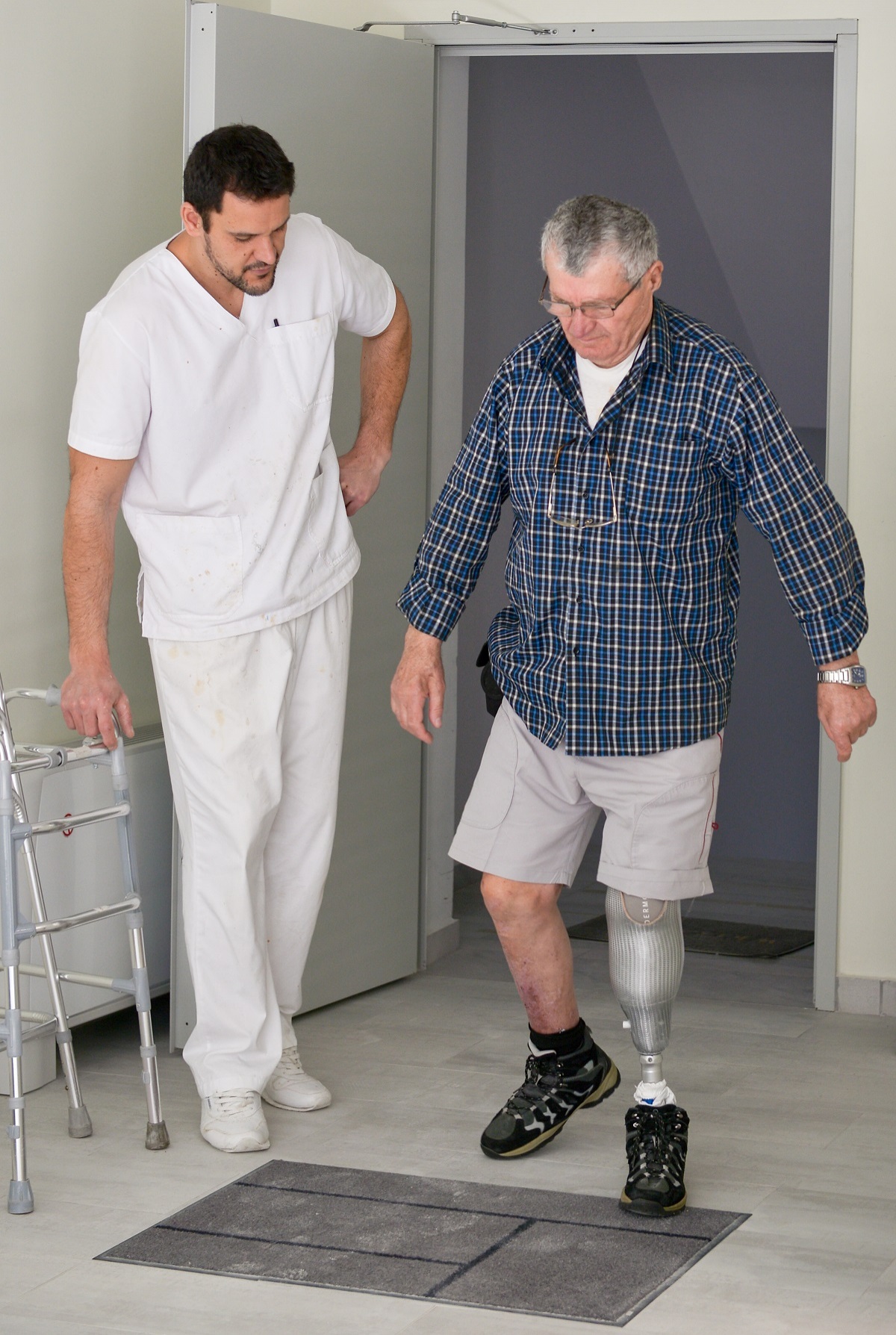In prosthetic rehabilitation, the patient should have an active role throughout its duration. Sometimes even in the pre-operative phase, as an amputation surgery, often requires the consent of him.
With the information of the attending physician and the clinical team, prosthetics in some cases can be started even before an amputation takes place. Our company's rehabilitation consultants are often called upon at this primary stage to have an advisory role. They undertake to explain, the whole process of prosthetic restoration. How do we start with the construction of the arificial limb, what techniques will we follow during the construction of the artificial limb, when will its construction be completed, what will the patient be able to achieve with its use, etc.
So, as long as the patient understands the possibilities he will have with the use of the artificial limb, he will be able to accept the new situation more easily.

The prosthetist, with his experience, evaluates
- the general condition of the patient (pathological and psychological),
- his balancing ability (with or without walking aid),
- his movement, to assess the progress of recovery.
They are factors that will help to categorize the patient, based on the activity levels (K0, K1, K2, K3, K4), which are estimated to be successful upon completion of rehabilitation.
Recognizing the K level is important, because it is the determining factor for the decision about the prosthetic device that we will offer you.
If you do not know your level of activity, please contact a specialized prosthesis of our company.
For more information read here.
Stump examination
We examine the stump in order to determine
- its muscular capabilities
- its anatomy
- the range of motion of the joint and
- we record the tolerable and nontolerant areas.
We assess the patient's balancing ability and take into account possible allergies, for the choice of materials.
The stump examination is very important and requires repeated checks and accurate measurements, for the correct construction of the prosthetic case.
It is also important that the patient himself, examines and cleans his stump.

Questions of new patients with amputation
Some of the problems we face when we come in contact with patients for the first time are:
What effect will amputation have on the rest of my life?
Regardless of the reason for an amputation, losing a limb is never easy (mentally or physically).
Amputation can negatively affect a person and change his life and the lives of his beloved ones. However, life after amputation is just a matter of finding a new routine.
For new amputees, the whole process may seem daunting, but it is always important to remember that amputation was done to improve our life or even save our life.
How can I best cope with this loss?
A good way to calm your fears is to find out as much as you can about what is bothering you. When you conclude that amputation is necessary, you will want to know what to expect after the surgery. In our company we have made a guide for Postoperative Rehabilitation of Amputation, which gives all the necessary advice for each type of amputation.
For more information click here.
How much does an artificial limb cost?
The cost of a prosthesis depends on many factors:
- type of construction (a more specialized intention costs more than a simple, everyday intention)
- amputation height (the higher the amputation height, the higher the cost of the prosthesis, as we have to replace the function in more joints)
- age of amputee (constructing a young patient is more expensive, as a dynamic prosthesis is usually chosen)
In any case, our company makes special prices and settlements. For more information you can call us at 210-6996220 and we will give you a detailed costing.
Does EOPYY cover any amount for my artificial limb?
For any type of prosthesis, we inform you about the amount that you will be reimbursed by EOPYY. Whether this is a new construction or a repair to your old limb.
In our company we have trained people, to inform you about the general privileges provided by Welfare and KEPA.
What will be my level of functionality after recovery?
Our priority is to help you regain the level of functionality you had before surgery, whether it is to return actively to your workplace, or to have at home and in your daily activities the desired independence.
If the amputation occurs after a chronic condition, our goal is to help you regain an even higher level of functionality than you experienced before surgery.

When can I start with my artificial limb?
It is important to start the recovery process as soon as possible, as this increases the chances of greater success. On the contrary, a long delay increases the rate of various physical and mental complications, such as muscle contractions, general lethargy, and even depression. The prosthetic rehabilitation is divided into two (2) phases:
the postoperative phase, which is the time between the surgery and the application of an artificial limb (of course, this includes the decision not to apply an artificial limb), and
the prosthetic phase, which begins with the construction of the temporary member and lasts until the delivery of the final member.
What is a temporary artificial limb?
It is mainly applied to lower limb amputations and as its name implies, it will be applied to the patient temporarily (for a short time) in the initial stages of prosthetics. Precisely because, the remaining limb (stump) tends to constantly change shape and volume, for quite some time after surgery, the temporary limb can be formed differently in repetitive changes.
The construction of the temporary limb begins, once the sutures have been removed and a large percentage of the swelling has subsided. The prosthetist takes the necessary measurements with a plaster cast, to make the socket that will fit inside it, the stump. The temporary limb is made in sections and will be used by the patient for about 5-7 weeks (in some cases for longer).
During this time, the patient is in frequent contact with his prosthetist, for the necessary adjustments in his socket, as long as the swelling subsides. With constant visits, we correct and improve the temporary device every time.
Many times patients rush to complete their artificial limb and ask us to proceed to the completion of the final member. In order for the construction of the final prosthesis to begin, the stump must have acquired a stable shape as much as possible. Because it still shrinks even after the use of the final device, the more stable it is, the longer will be the period of good application of the final socket.
In any case, the patient should follow the care instructions of the stump and not neglect the training exercises at home.
Our concern is the perfect application of the member in all stages of rehabilitation, whether this is for the temporary member or for the final one.

Construction of a Permanent Artificial Limb
Once the stump has almost taken its final shape and the patient's gait has regained balance, we are ready to proceed with the construction of the permanent artificial limb.
The prosthesis is made partially or completely, depending on the case. We will definitely need a new plaster cast from the stump, because its perimeter has changed. In some cases, the use of new types of joints is even recommended.
We create an artificial limb, which will offer the patient
- comfortable walking and
- safe support in all his daily activities and
- at the same time will be aesthetically acceptable.
For the foundation of a successful artificial limb, we have found that the main reason is the surface of the stump (stump-socket interface) to have a correct fit with the prosthetic socket. Of course, surgery also contributes here.
For more information read the following article.

